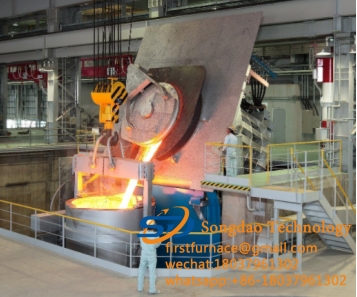- 15
- Apr
The role of each component of the induction melting furnace
The role of each component of the induction melting furnace
One, the basic components
The basic components refer to a set of equipment that must have components for normal operation.
1-1, transformer
The transformer is a device that provides the required electrical energy to the equipment.
Transformers can be divided into dry-type transformers and oil-cooled transformers according to different cooling media.
In the intermediate frequency furnace industry, we recommend special oil-cooled rectifier transformers.
This kind of transformer is far better than ordinary transformers in terms of overload capacity and anti-interference.
Factors affecting transformer capacity
1) Iron core
The material of the iron core directly affects the magnetic flux,
Common iron core materials include silicon steel sheets (oriented/non-oriented) and amorphous strips;
2) Wire package material
Now there are aluminum core wire packages, copper core wire packages, and copper clad aluminum wire packages.
The material of the wire package directly affects the heat generation of the transformer;
3) Insulation class
The allowable working temperature of class B is 130℃, and the allowable working temperature of class H is 180℃
1-2, intermediate frequency power supply
The intermediate frequency power supply cabinet is the core component of a system.
No matter what type of intermediate frequency power supply is, it is composed of two parts: rectifier/inverter.
The function of the rectifier part is to transform the 50HZ alternating current used in our lives into a pulsating direct current. According to the number of rectified pulses, it can be divided into 6-pulse rectification, 12-pulse rectification, 24-pulse rectification and so on.
After rectification, a smoothing reactor will be connected in series on the positive pole.
The function of the inverter part is to convert the direct current generated by the rectification into an intermediate frequency alternating current.
1-3, capacitor cabinet
The function of the capacitor cabinet is to provide a reactive power compensation device for the induction coil.
It can be simply understood that the amount of capacitance directly affects the power of the device.
have to be aware of is,
There is only one kind of resonant capacitor (electrical heating capacitor) for parallel device capacitors.
In addition to the resonant capacitor (electric heating capacitor), the series device also has a filter capacitor.
This can also be used as a criterion for judging whether the device is a parallel device or a series device.
1-4, furnace body
1) Furnace body classification
The furnace body is the working part of the system. According to the material of the furnace shell, it is divided into two types: steel shell and aluminum shell.
The structure of the aluminum shell furnace is relatively simple, consisting of only the induction coil and the furnace body. Because of the structural instability, it is strictly forbidden to use it at present. So our explanation focuses on the steel shell furnace.
2) The working principle of the furnace body
The main working parts of the furnace body are composed of three parts,
1 Induction coil (made of water-cooled copper pipe)
2 Crucible (usually made of lining material)
3 Charges (various metal or non-metal materials)

The basic principle of induction furnace is a type of air core transformer.
The induction coil is equivalent to the primary coil of the transformer,
The various furnace materials in the crucible are equivalent to the secondary coil of the transformer,
When the intermediate frequency current (200-8000HZ) is passed through the primary coil, it will generate magnetic lines of force to cut the secondary coil (burden) under the action of the electromagnetic field, causing the burden to generate an induced electromotive force, and induce an induced current on the surface perpendicular to the axis of the induction coil. So that the charge itself heats up and melts the charge.
